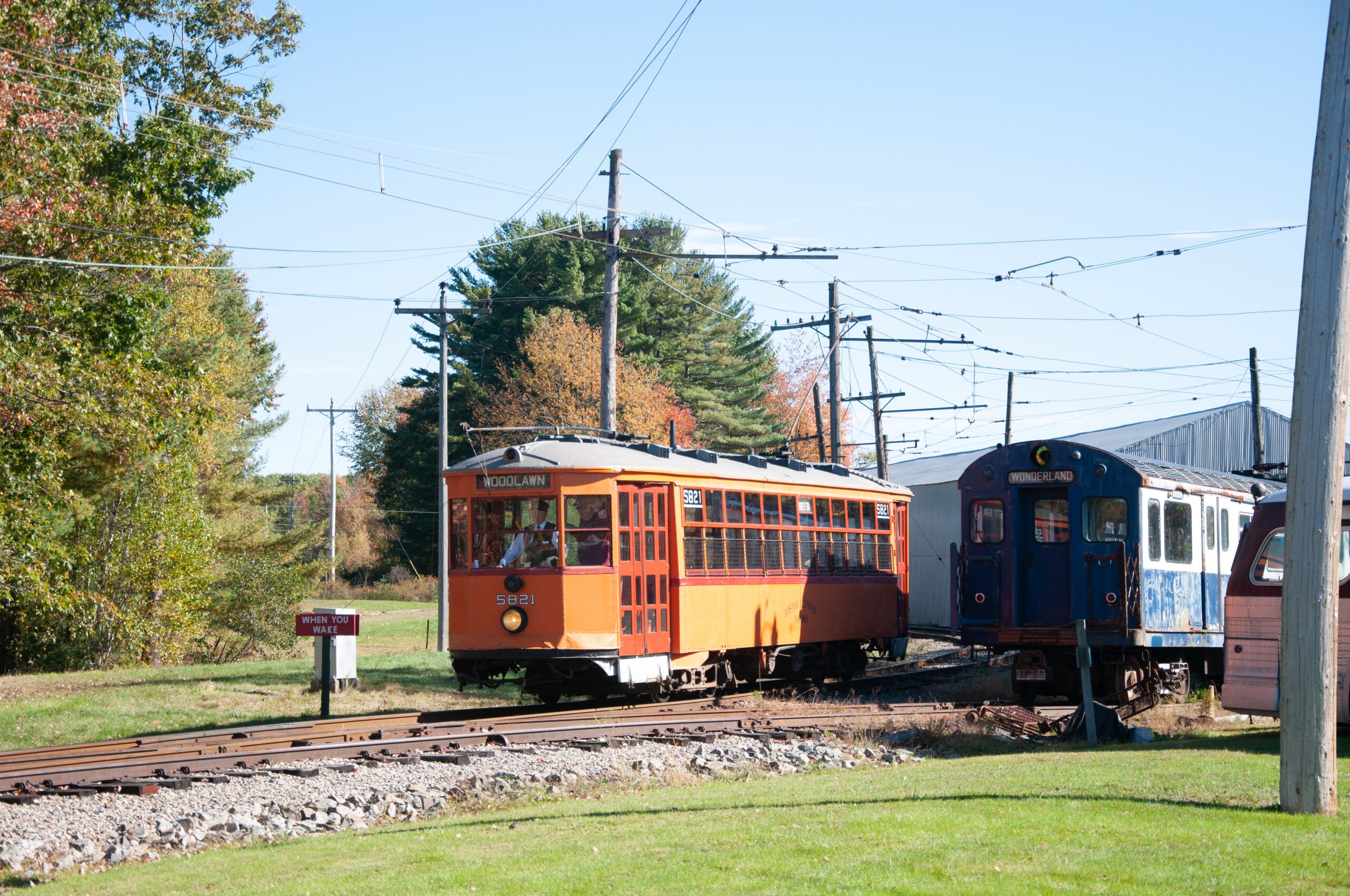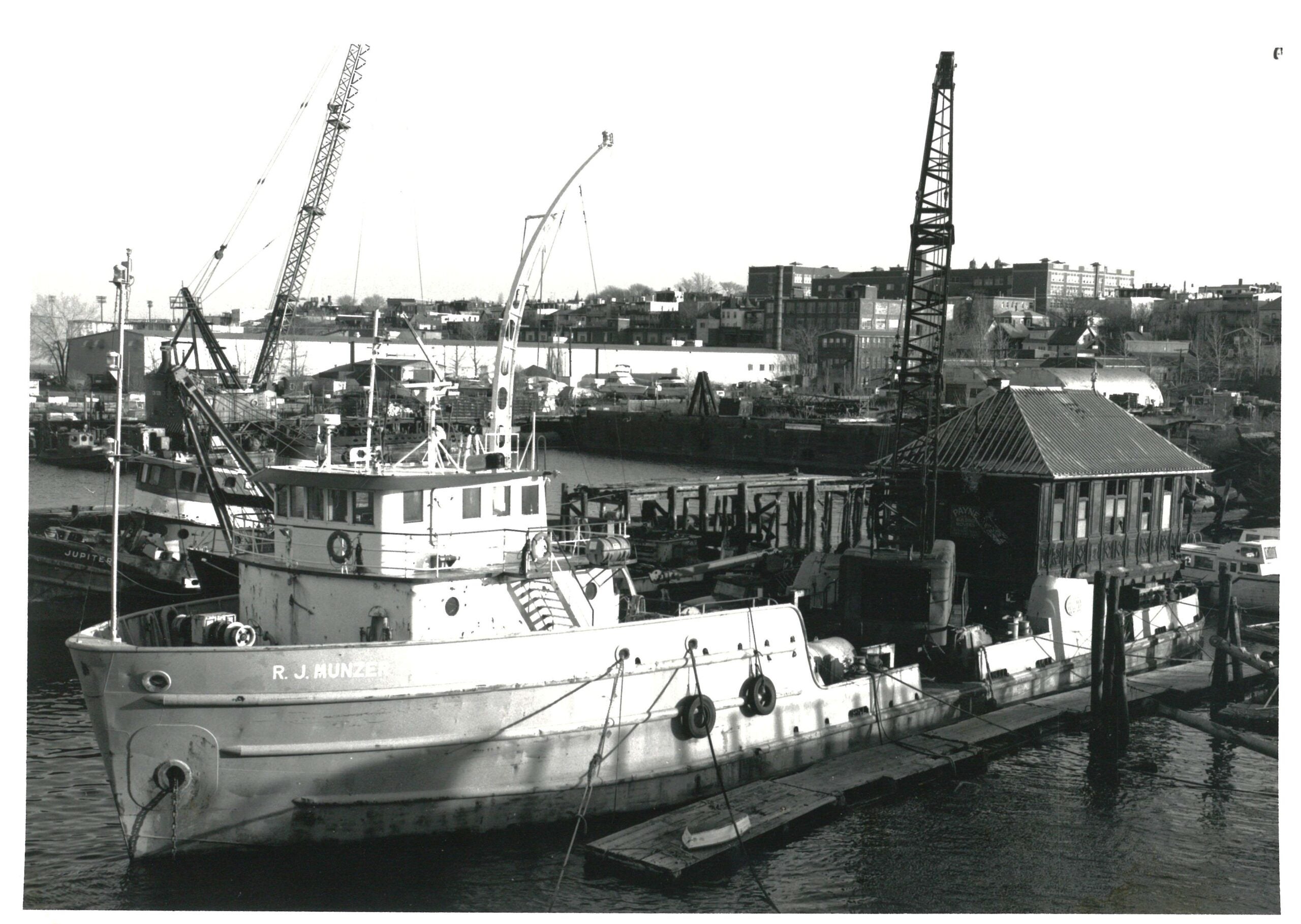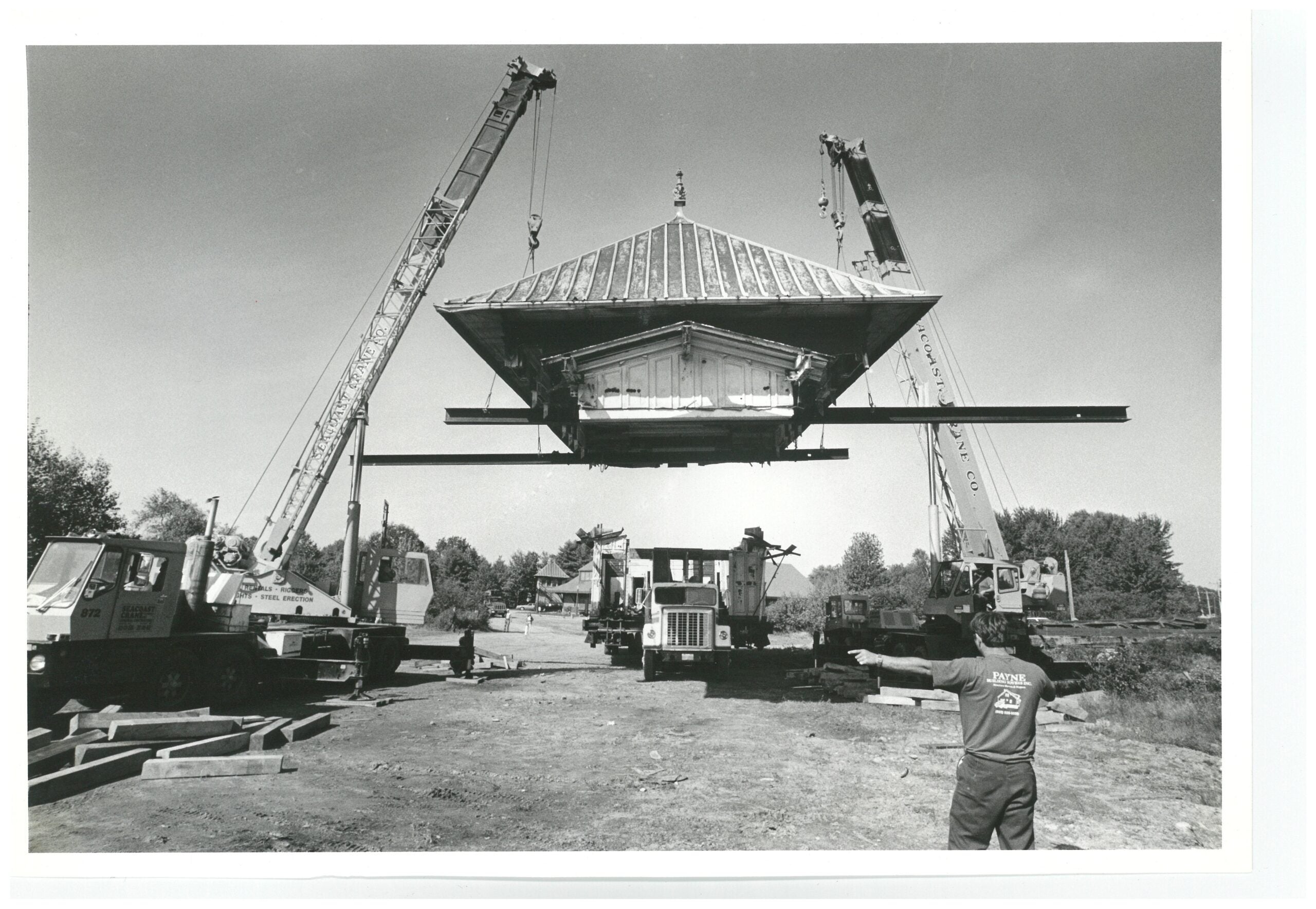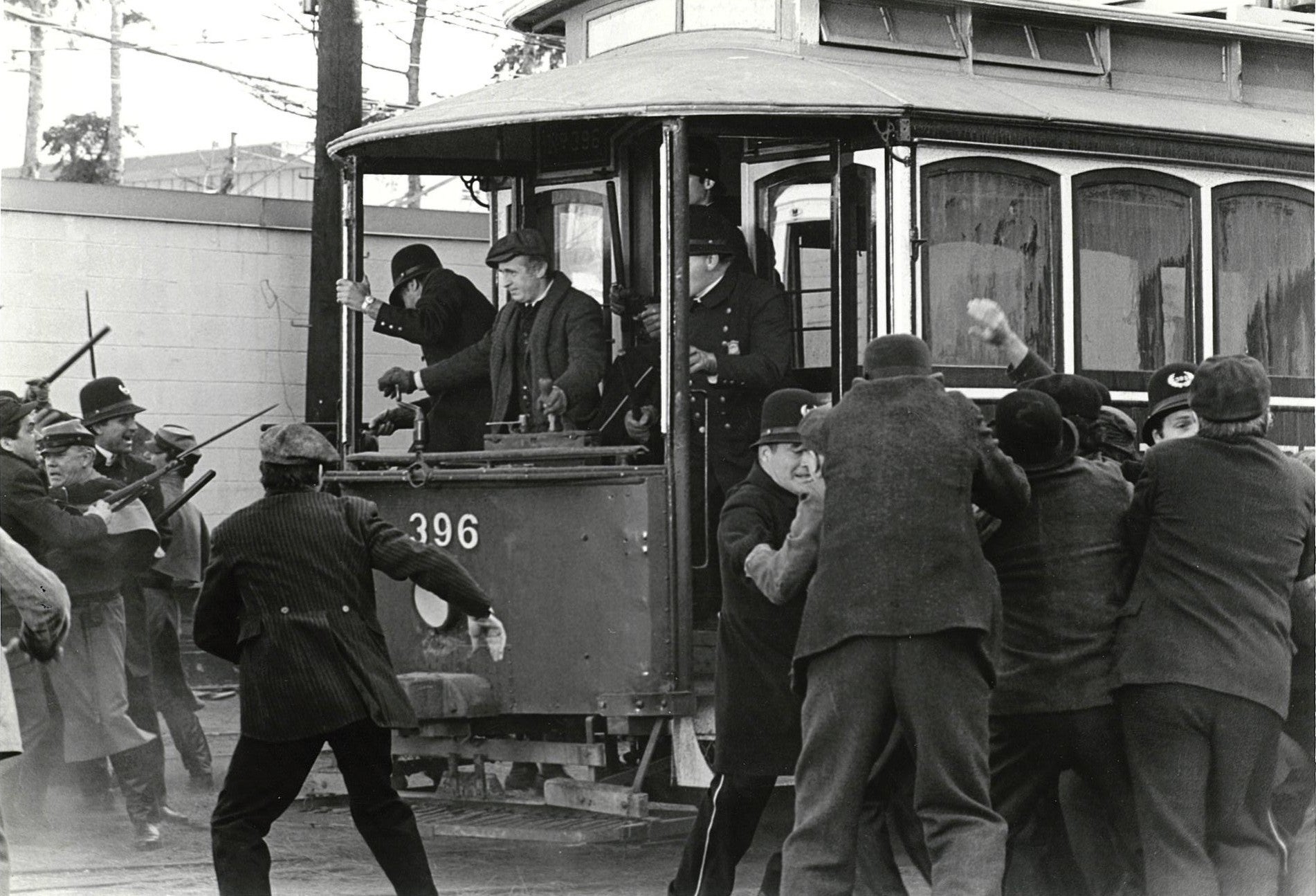Newsletter Signup
Stay up to date on all the latest news from Boston.com

In a quiet, wooded area just outside of town, a Boston streetcar chugs along its tracks. Its cheery orange exterior is unblemished by rot or rust; its interior lit by the warm glow of overhead lamps. Passengers perch on rows of red wooden benches, watching the scenery go by. The operator checks her watch: She’s running right on time.
If this vignette strikes you as uncharacteristically serene for Boston, with its myriad public transit snafus, it’s because it is. Long ago, this streetcar, semi-convertible No. 5821, shuttled passengers from Boston to Everett and back along the Boston Elevated Railway, or BERy. But it was decommissioned in 1954 after running for 30 years. These days it lives in Kennebunkport, Maine, and the only trips it makes are around the 1.5-mile track at the Seashore Trolley Museum.
The Metropolitan Transit Authority — which would later become the MBTA — absorbed BERy in 1947. Gradually, the MTA phased out older streetcars like No. 5821 in favor of newer models, buses, and trackless trolleys. And the modernization didn’t stop there: In the coming decades, the T regularly replaced aging trains with updated versions as new innovations in design and accessibility rendered the older models obsolete.
Workhorse T trains often live long lives — too long, cynical commuters might say. (Today, the oldest operational trains in the MBTA system are the 78-year-old PCC trolleys that serve the Mattapan line, put into service in 1945.) But even the cash-strapped MBTA has to let the old models die eventually.
The question then becomes, what of the discarded trains? What is one to do with 30,000 pounds of aluminum and steel (and sometimes lead paint and asbestos) once it’s reached the end of its functional life?

For streetcar No. 5821, the answer to that question can be found at the Seashore Trolley Museum in Kennebunkport.
The museum was founded in 1939 as the New England Electric Railway Historical Society. Since then, it has amassed a collection of over 250 transit vehicles from around the country and world, plus a host of transit-related artifacts — including some 80 trains, trolleys, and miscellaneous transit heirlooms from Boston.
Powered by a small staff and a small army of volunteers, the trolley museum painstakingly restores old trains to their original glory. Visitors to the museum get to view refurbished trains on display, watch others undergo repairs in the restoration shop, and climb aboard historic cars for a ride through the Maine countryside along the 1.5-mile “interpretive railway.”
Restoration does not involve simply matching paint colors. It can take 20 or 30 years of research, fundraising, materials sourcing, and labor to fully restore a vintage train. That’s “several generations” of volunteers working on a single car, explained Katie Orlando, the museum’s executive director.
Often the museum receives trains that have been stripped of their “trucks,” the brakes, motors, and equipment beneath the car itself. Volunteer researchers go to great lengths to track down (pun intended) replacement parts, sometimes finding them in unexpected places. Orlando recalls hearing a rumor that an old trolley company in Paris, Maine, had gone belly-up and ditched a bunch of old trucks and wheel sets in a nearby swamp — a potential treasure trove for the museum.
“There was this rumor for decades that the swamp was real, and that there were trolleys, trucks hanging out in there, all the things that you’ve ever wanted,” Orlando laughed. “It just so happened that one of our trolleys from Lexington, Massachusetts, needed that type of truck, so our volunteers went up there, found the swamp, and sure enough, the trucks were real.”
During restoration, there are compromises to be made between total historical accuracy and modern standards for safety and health. The museum’s set of circa-1963 Red Line trains, for instance, were built with asbestos floor tiling and lead paint. Volunteers are searching for a way to refurbish them in a way that’s safe, but “still somewhat historically accurate,” Orlando said. “We do the research, have the conversations, the ethical dilemmas.”
The trolley museum has a longstanding relationship with the MBTA, as it did with the agency’s predecessors the MTA and BERy. Volunteers have made the journey from Kennebunkport to Boston and back to collect its acquisitions — usually trains, but occasionally a piece of track or other artifact — many times. Perhaps the most memorable trip came after the MBTA decided in the 1980s to demolish the elevated Orange Line and replace it with underground tracks, when the agency donated the Northampton Station building that had previously sat on the elevated line to the trolley museum. Moving the 97-ton structure to Maine took a full year (1989 to 1990) and required the commandeering of an oil rig. Volunteer crews had to remove the roof and transport the station in two pieces for the last five miles, because it was too tall to fit beneath the town’s utility wires.


“It takes such labor of love and patience,” Orlando said of the preservation process. “There are no words to put into perspective how hard our people work.”
Sometimes, members of the trolley museum’s collection will appear as extras in period pieces. Such was the case for BERy No. 396, a streetcar that was in use in Boston from 1900 to 1950 and appeared in the film “The Cardinal” (1963) and the miniseries “The Best of Families” (1977).


There’s something about public transit that keeps visitors and volunteers coming back to the trolley museum, Orlando said. The preserved trains evoke a sense of history, of nostalgia, of interconnectedness. People who come can just tell that the Seashore Trolley Museum is a special place.
“People really have a respect for what we’ve been able to do,” Orlando said. In 1947, a forest fire in the woods at the periphery of the museum’s campus threatened to destroy its collection. “Our neighbors literally sacrificed their own farmlands to come and pour water on our land.”
But not every MBTA train gets a cushy retirement package with such devoted stewards.
If, like me, you had a certain fondness for the blocky profile and imitation-wood paneling of the somewhat-dilapidated (retro?) Orange Line trains the MBTA decommissioned last fall, then I’m sorry to say: Those cars are getting chopped up into little pieces.
After the asbestos abatement, that is.
Because the majority of old T trains do not get to retire to greener pastures in Maine. Instead, they’re sold to the highest bidder, usually a dismantling company, and broken down for scrap metal.
Dan Costello runs Costello Dismantling in Wareham, Massachusetts, which in 2022 won the bid to scrap 120 Orange Line trains put into service between 1979 and 1981. It’s not the first time Costello has worked with the MBTA, and he’s well-versed in train deconstruction.
Once the trains are asbestos-free, “we use big shears and heavy equipment to dismantle and cut that material and then sort it and shop it,” Costello explained.
The trains get cut down into two- to five-foot pieces of scrap, sorted by material, and shipped to the end user who recycles them into new metal products.
“I couldn’t tell you exactly what it would be,” Costello said. “It could come back as anything.”
Costello had bad news for train enthusiasts hoping there might be a converted MBTA train out there they could call home for the night — in the vein of AirBnB offerings like this vintage “caboose cottage” in Waynesville, North Carolina, or this lovingly restored 1941 railcar-turned-summer rental in Lockhaven, Pennsylvania.
He’s had private buyers reach out to him about buying old T trains in the past, he said, but their half-baked ideas for converting them into cheap novelty housing failed to account for the “prohibitive” cost of transporting the hulking trains, which is a “highly regulated and permitted process.”
Just moving the old Orange Line trains from Boston to Wareham involves a series of engineering surveys by the Department of Transportation to make sure the roads they travel are structurally sound enough to support the trains, plus a police escort, Costello said. A bit more complicated than the average transit buff can handle.
Exactly what those old Orange Lines are reincarnated as may be a mystery, even to Costello, but one thing is certain. Lovingly preserved or unceremoniously recycled, MBTA trains never really die.
Stay up to date on all the latest news from Boston.com
Stay up to date with everything Boston. Receive the latest news and breaking updates, straight from our newsroom to your inbox.
Conversation
This discussion has ended. Please join elsewhere on Boston.com